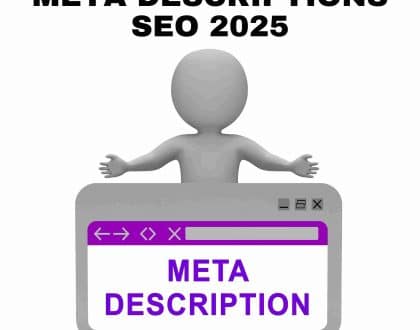Web Design Trends of 2024: Unveiling the Future

Web Design Trends of 2024 – The digital landscape is constantly evolving, and with each passing year, new trends emerge, reshaping the way websites are designed and experienced. As we step into 2024, the world of web design continues to evolve at a rapid pace, driven by technological advancements, changing user expectations, and innovative design philosophies. In this comprehensive guide, we’ll delve into the top web design trends of 2024, exploring their significance, impact, and practical applications.
Unveiling the Future: Web Design Trends of 2024
Immersive Visual Experiences:
In 2024, web design is all about creating immersive visual experiences that captivate and engage users from the moment they land on a website. With the widespread adoption of high-resolution displays and advancements in graphic technologies, designers are pushing the boundaries of visual design to deliver stunning, cinematic experiences.
- Cinematic Backgrounds: Full-screen video backgrounds and cinemagraphs are gaining popularity as they add dynamism and depth to web pages, creating an immersive atmosphere that draws users in.
- 3D Graphics and Effects: The use of 3D graphics and effects is on the rise, allowing designers to create lifelike animations, product visualizations, and interactive elements that elevate the user experience to new heights.
- Augmented Reality (AR) Integration: As AR technology becomes more accessible, we can expect to see an increasing number of websites integrating AR features to provide interactive and engaging experiences. From virtual try-on for e-commerce to immersive storytelling, the possibilities are endless.
Dark Mode Design:
Dark mode design has emerged as a prominent trend in recent years, driven by its aesthetic appeal, energy efficiency, and potential health benefits. In 2024, we anticipate dark mode design to become even more prevalent across various websites and applications.
- Enhanced Readability: Dark mode not only reduces eye strain in low-light environments but also enhances readability by providing high contrast between text and background elements.
- Mood and Atmosphere: Dark backgrounds can evoke a sense of sophistication, elegance, and mystery, making them particularly suitable for brands aiming to convey a premium or cutting-edge image.
- Customization Options: To cater to diverse user preferences, many websites now offer customization options that allow users to toggle between light and dark modes based on their personal preference or environmental conditions.
Minimalist and Functional Design:
While visual extravagance has its place, minimalist and functional design principles continue to resonate with users who value simplicity, clarity, and efficiency. In 2024, minimalist web design is expected to remain a dominant trend, characterized by clean layouts, ample white space, and intuitive navigation.
- Simplified User Interfaces: Streamlined user interfaces prioritize essential content and functionality, minimizing distractions and making it easier for users to accomplish their goals with minimal friction.
- Microinteractions: Microinteractions play a crucial role in enhancing user engagement and feedback by providing subtle animations, transitions, and visual cues that guide users through the interface and reinforce their actions.
- Accessibility and Inclusivity: Designing with accessibility in mind is no longer optional but essential. In 2024, we’ll see an increased emphasis on creating inclusive web experiences that are accessible to users of all abilities, including those with disabilities.
Personalized User Experiences:
Personalization has become a cornerstone of modern web design, allowing brands to tailor their content and interactions to individual user preferences, behaviors, and demographics. In 2024, we expect to see further advancements in personalized user experiences driven by data-driven insights and machine learning algorithms.
- Dynamic Content Recommendations: Websites are leveraging AI-powered recommendation engines to deliver personalized content recommendations based on user browsing history, preferences, and contextual data, increasing engagement and retention rates.
- Adaptive Interfaces: Adaptive interfaces dynamically adjust their layout, content, and functionality based on factors such as device type, screen size, and user preferences, ensuring a seamless experience across various platforms and devices.
- Contextual Messaging: Contextual messaging involves delivering targeted messages and offers to users based on their current location, behavior, or stage in the customer journey, enhancing relevance and driving conversions.
Voice User Interfaces (VUIs):
As voice technology continues to mature, voice user interfaces (VUIs) are gaining traction as a convenient and intuitive way to interact with websites and applications. In 2024, we anticipate the widespread adoption of VUIs across various industries, revolutionizing the way users navigate and engage with digital content.
- Voice Search Optimization: With the growing popularity of voice search, website owners are optimizing their content and metadata for natural language queries, ensuring visibility and relevance in voice-enabled search results.
- Conversational Interfaces: Conversational interfaces mimic human conversation, allowing users to interact with websites using natural language commands and responses. Chatbots and virtual assistants are prime examples of conversational interfaces that provide personalized assistance and support.
- Multimodal Experiences: Multimodal experiences combine voice, touch, and gesture inputs to create seamless interactions that cater to users’ preferences and capabilities, whether they’re using a smart speaker, smartphone, or wearable device.
Conclusion: Web Design Trends of 2024
The web design landscape of 2024 is characterized by innovation, creativity, and user-centricity. From immersive visual experiences and dark mode design to minimalist interfaces and personalized user experiences, the trends outlined in this guide reflect the evolving needs and preferences of today’s digital consumers. By embracing these trends and staying attuned to emerging technologies, designers can create compelling, accessible, and memorable web experiences that delight users and drive business results in the years to come.
Recommended Posts

Local SEO vs. Global SEO: A Comprehensive Guide
May 14, 2025



